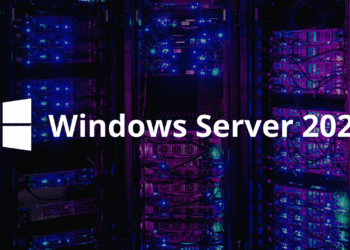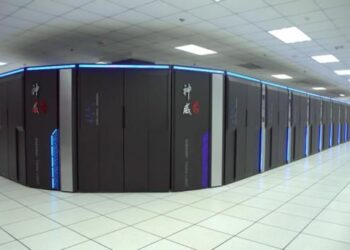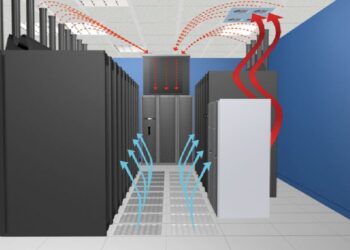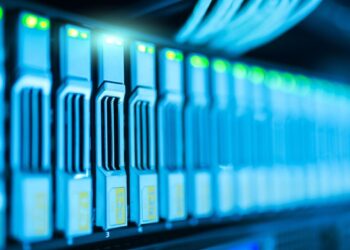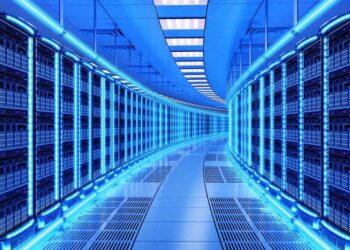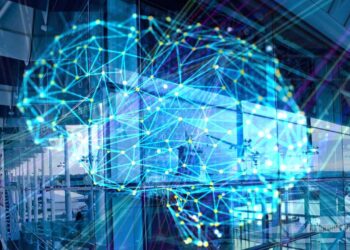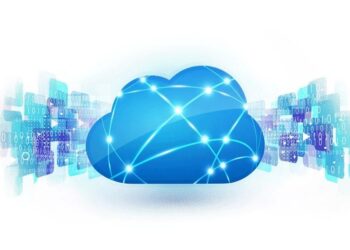The digital revolution has brought artificial intelligence (AI) to the forefront of innovation, transforming industries and everyday life. As the demand for AI-powered applications increases, the underlying infrastructure—data centers—must evolve to support these advanced workloads. In this comprehensive article, we explore how to optimize data centers specifically for AI. We will delve into critical design strategies, emerging technologies, and best practices for energy efficiency, scalability, and security. This guide is designed for IT professionals, data center managers, and technology enthusiasts who want to ensure that their facilities are future-ready in the age of AI.
Over the past decade, AI has rapidly advanced from a research concept to an essential component of modern business. Companies across industries are deploying AI to analyze massive datasets, automate processes, and drive decision-making. However, the effectiveness of AI solutions is largely determined by the performance of the data centers that host them. Traditional data centers, originally built for more conventional computing tasks, face unique challenges when confronted with the high computational demands of AI workloads.
This article aims to provide a detailed roadmap for optimizing data centers for AI. We cover everything from understanding the core differences between conventional and AI-centric data centers to implementing state-of-the-art hardware, software, and cooling solutions. By the end of this guide, readers will have a thorough understanding of the multifaceted approach required to enhance data center performance for AI tasks.
AI and Its Demands on Data Centers
The Evolution of AI
AI has evolved significantly over the years. What began as simple machine learning algorithms has now advanced to deep learning, neural networks, and complex data analytics. AI systems require vast amounts of data, intensive processing power, and high-speed connectivity—all of which place extraordinary demands on the data centers that support them.
Distinct Requirements for AI Workloads
Unlike traditional computing tasks, AI workloads are characterized by:
A. High-Performance Computing Needs: AI algorithms, particularly deep neural networks, require immense computational power. This necessitates the use of specialized hardware like Graphics Processing Units (GPUs) and Tensor Processing Units (TPUs).
B. Massive Data Handling: AI applications often process terabytes or even petabytes of data. Efficient data handling and storage solutions are crucial to avoid bottlenecks.
C. Real-Time Processing: Many AI applications, such as autonomous vehicles and smart surveillance systems, require real-time data processing with minimal latency.
D. Scalability: As AI projects expand, data centers must scale seamlessly without compromising performance.
E. Energy Consumption: The intensive computations inherent in AI significantly increase energy usage, making energy efficiency a top priority.
Understanding these requirements is the first step in reimagining data centers to accommodate AI workloads.
Key Challenges in Optimizing Data Centers for AI
1. Thermal Management and Cooling
AI hardware, particularly GPUs and TPUs, generates substantial heat during operation. Inefficient cooling systems can lead to overheating, reducing hardware lifespan and performance.
- Cooling Innovations: Modern cooling solutions such as liquid cooling, immersion cooling, and advanced air-flow designs can significantly reduce temperatures and improve efficiency.
- Thermal Monitoring: Incorporating advanced sensors and monitoring software is essential to track and manage temperature fluctuations in real time.
2. Energy Efficiency
The high energy consumption of AI computations not only increases operational costs but also impacts the environment. Data centers need to adopt energy-efficient technologies and practices.
- Renewable Energy: Integrating renewable energy sources such as solar and wind can reduce carbon footprints.
- Power Management: Advanced power management systems ensure that energy is allocated efficiently, reducing waste and optimizing performance.
3. Infrastructure Scalability
AI projects are often dynamic, with unpredictable growth trajectories. Data centers must be designed to scale rapidly in response to fluctuating demand.
- Modular Designs: Building data centers with modular components allows for easy expansion without significant downtime.
- Cloud Integration: Leveraging hybrid cloud solutions can provide additional scalability and flexibility for AI workloads.
4. Hardware Specialization
Conventional CPUs often fall short when handling AI tasks. The transition to specialized AI hardware is crucial.
- GPU and TPU Integration: Investing in GPUs and TPUs, which are designed for parallel processing, can dramatically accelerate AI computations.
- FPGA Utilization: Field-Programmable Gate Arrays (FPGAs) offer customizable processing capabilities that can be tailored to specific AI applications.
5. Data Security and Privacy
With AI processing sensitive data, robust security measures must be in place to protect against breaches and data leaks.
- Encryption: Data should be encrypted both at rest and in transit.
- Access Control: Implementing strict access control measures ensures that only authorized personnel can access sensitive information.
6. Software Optimization
Efficient software frameworks and algorithms are vital to extract maximum performance from the hardware.
- AI Frameworks: Utilizing frameworks such as TensorFlow, PyTorch, and Caffe can optimize the development and deployment of AI models.
- Load Balancing: Effective load balancing ensures that computational tasks are distributed evenly across available resources.
Strategies for Optimizing Data Centers for AI
To address the challenges outlined above, a multifaceted approach is required. Here, we discuss several key strategies that organizations can implement to optimize their data centers for AI.
A. Advanced Cooling Techniques
-
Liquid Cooling Systems:
Liquid cooling is emerging as a leading solution to manage the heat generated by AI hardware. By circulating a coolant through the system, these solutions offer superior heat dissipation compared to traditional air cooling. -
Immersion Cooling:
In immersion cooling, electronic components are directly submerged in a dielectric fluid, which absorbs heat more efficiently than air. This method is particularly beneficial for high-density server environments. -
Hybrid Cooling Models:
Combining liquid and air cooling can create a balanced solution that maximizes efficiency while reducing operational complexity.
B. Energy Management Innovations
-
Renewable Energy Integration:
Data centers can significantly reduce their carbon footprint by integrating renewable energy sources. Solar panels and wind turbines, for instance, can power large segments of a facility, contributing to both sustainability and cost reduction. -
Smart Grid Technology:
Implementing smart grid systems enables real-time monitoring and dynamic adjustment of power usage. This ensures that energy is distributed efficiently, reducing waste. -
Power Usage Effectiveness (PUE):
Continuously monitoring and improving PUE is crucial. A lower PUE indicates more efficient use of energy within the data center, which directly correlates with lower operational costs.
C. Infrastructure Scalability
-
Modular Data Centers:
Modular data centers are designed to be scalable. They allow organizations to add new modules as demand grows without significant disruptions to the overall system. -
Hybrid Cloud Solutions:
Integrating on-premises infrastructure with cloud services can offer unparalleled scalability. This hybrid approach allows companies to dynamically allocate resources based on real-time needs. -
Edge Computing:
By distributing computational power closer to the data source, edge computing reduces latency and bandwidth usage, making it an ideal complement to centralized data centers.
D. Specialized Hardware Deployment
-
GPU and TPU Acceleration:
Specialized processing units such as GPUs and TPUs are optimized for parallel processing tasks that are common in AI workloads. Their deployment can lead to significant improvements in processing speed and efficiency. -
FPGA Customization:
FPGAs offer the flexibility to be programmed for specific tasks. Their ability to be reconfigured for various AI applications makes them a valuable asset in optimizing data center performance. -
High-Speed Interconnects:
Upgrading to high-speed interconnects, such as InfiniBand or NVLink, ensures that data can be transferred quickly between processing units. This minimizes latency and maximizes the performance of AI applications.
E. Enhanced Security Protocols
-
Comprehensive Encryption:
Encrypting data at all stages—during storage, processing, and transmission—is critical. This protects sensitive information from unauthorized access and cyber threats. -
Multi-Factor Authentication (MFA):
Implementing MFA adds an extra layer of security, ensuring that only authorized users can access the data center’s resources. -
Regular Security Audits:
Periodic audits and vulnerability assessments help identify and mitigate potential security risks before they become major issues.
F. Software and Workflow Optimization
-
Optimized AI Frameworks:
Leveraging state-of-the-art AI frameworks that are designed for efficiency can significantly enhance the performance of AI applications. These frameworks are continually updated to take advantage of the latest hardware advancements. -
Algorithmic Efficiency:
Developing and refining algorithms to run more efficiently on available hardware can reduce processing times and energy consumption. -
Containerization and Virtualization:
Using containers and virtual machines enables flexible and scalable deployment of AI workloads, ensuring that resources are allocated efficiently.

Technological Innovations Driving Data Center Optimization
The rapid pace of technological change continuously influences how data centers are built and managed. Several innovative technologies are playing a pivotal role in enhancing the performance and efficiency of data centers for AI.
A. Artificial Intelligence in Data Center Management
Modern data centers are increasingly leveraging AI to optimize their own operations. AI-driven analytics can predict hardware failures, optimize cooling systems, and manage power distribution dynamically.
-
Predictive Maintenance:
AI algorithms analyze sensor data to predict hardware failures before they occur. This proactive approach minimizes downtime and reduces maintenance costs. -
Dynamic Resource Allocation:
Machine learning models can analyze workload patterns in real time, dynamically allocating resources where they are needed most. This ensures that the data center operates at peak efficiency at all times.
B. Internet of Things (IoT) Integration
IoT devices are revolutionizing data center monitoring. With a network of sensors embedded throughout the facility, operators can gather detailed data on temperature, humidity, power consumption, and more.
- Real-Time Monitoring:
IoT sensors enable continuous monitoring, providing valuable insights into the operational status of every component within the data center. - Automated Adjustments:
When integrated with AI systems, IoT devices can trigger automated adjustments to cooling and power distribution systems, ensuring optimal performance without human intervention.
C. High-Density Computing and Micro Data Centers
As AI workloads become more prevalent, the need for high-density computing solutions has increased. Micro data centers, which are smaller, self-contained units, allow for distributed processing and localized management of AI tasks.
- Localized Processing:
Deploying micro data centers at strategic locations reduces latency and improves response times for applications that require real-time processing. - Scalable Architectures:
Micro data centers offer a scalable solution that can be deployed incrementally, providing flexibility as computational needs evolve.
D. Software-Defined Infrastructure
Software-defined infrastructure (SDI) abstracts the control of hardware resources, allowing for more dynamic management of data centers. SDI enables:
- Centralized Management:
A centralized software layer can control various hardware components, optimizing performance and reducing manual intervention. - Rapid Reconfiguration:
SDI allows data centers to reconfigure their resources quickly in response to changing workloads, ensuring that AI applications receive the computing power they need on demand.
Implementing Best Practices for AI-Optimized Data Centers
Successfully optimizing a data center for AI involves a careful blend of technological upgrades, process improvements, and strategic planning. Below are some best practices that organizations should consider:
A. Comprehensive Planning and Assessment
Before initiating any upgrades, it is crucial to perform a thorough assessment of the existing infrastructure. This involves:
A. Audit of Current Infrastructure:
Evaluate current systems to determine their suitability for AI workloads and identify areas for improvement.
B. Capacity Forecasting:
Anticipate future growth and ensure that the infrastructure can scale accordingly.
C. Risk Assessment:
Identify potential vulnerabilities and develop mitigation strategies to protect against data loss, downtime, and cyber threats.
B. Collaborative Approach
Optimizing data centers for AI is not solely a technological challenge; it also involves people and processes.
A. Cross-Departmental Collaboration:
Foster collaboration between IT, facilities management, and cybersecurity teams to ensure a unified approach.
B. Vendor Partnerships:
Work closely with hardware and software vendors to access the latest technology and receive specialized support.
C. Employee Training:
Invest in training programs to equip staff with the skills necessary to manage and maintain AI-optimized infrastructure.
C. Continuous Monitoring and Improvement
Optimization is an ongoing process rather than a one-time fix.
A. Implement Monitoring Tools:
Utilize comprehensive monitoring tools to track performance, energy consumption, and security metrics continuously.
B. Feedback Loops:
Establish mechanisms for feedback and regular reviews, ensuring that the data center can adapt to evolving AI demands.
C. Benchmarking:
Compare performance metrics against industry standards and adjust strategies accordingly.

Case Studies: Successful AI Data Center Optimizations
Examining real-world examples can offer valuable insights into the strategies that work best for optimizing data centers for AI.
Case Study 1: A Global Tech Giant
A leading technology company recently overhauled its data center infrastructure to support advanced AI applications. Key elements of their strategy included:
A. Integration of Liquid Cooling Systems:
The company implemented advanced liquid cooling solutions to manage the significant heat output from its AI processing units.
B. Deployment of High-Density GPU Clusters:
By upgrading to specialized GPUs and high-speed interconnects, the company dramatically reduced processing times for deep learning tasks.
C. Use of Predictive Maintenance Tools:
AI-driven predictive maintenance minimized downtime by identifying potential hardware issues before they escalated.
Case Study 2: A Financial Services Leader
A major financial institution faced challenges with real-time data analytics for fraud detection and market analysis. Their data center optimization strategy involved:
A. Hybrid Cloud Integration:
They adopted a hybrid cloud approach to balance on-premises and cloud resources, enabling rapid scalability in response to fluctuating demand.
B. Enhanced Security Protocols:
By implementing comprehensive encryption and multi-factor authentication, they ensured the security of sensitive financial data.
C. Edge Computing Deployment:
The institution leveraged edge computing to process data closer to the source, reducing latency and improving real-time analytics.
Future Directions in Data Center Optimization for AI
The intersection of AI and data center technology is continuously evolving. Future advancements promise even greater efficiency, reliability, and performance.
Emerging Trends
-
Quantum Computing Integration:
While still in its infancy, quantum computing holds the potential to revolutionize AI processing. Future data centers may incorporate quantum processors to handle complex algorithms at unprecedented speeds. -
Autonomous Data Centers:
Advances in AI could lead to fully autonomous data centers that self-manage, self-heal, and optimize without human intervention. These centers would dynamically adjust resources, predict failures, and maintain security in real time. -
Green Data Centers:
As sustainability becomes increasingly important, future data centers will likely focus on achieving net-zero energy consumption. Innovations in renewable energy, combined with advanced cooling and energy management systems, will drive this green transformation.
The Role of Research and Development
Investment in R&D is critical for maintaining a competitive edge. Ongoing research into novel cooling methods, new semiconductor materials, and energy harvesting technologies will continue to shape the future of AI-optimized data centers. Collaboration between academic institutions, technology companies, and government agencies is essential to accelerate these innovations.
Conclusion
Optimizing data centers for AI is not just about upgrading hardware; it is about rethinking the entire infrastructure to meet the demands of next-generation computing. By adopting advanced cooling solutions, integrating renewable energy, deploying specialized hardware, and implementing rigorous security protocols, organizations can create data centers that are both efficient and resilient. Furthermore, leveraging AI for self-management and predictive maintenance will pave the way for autonomous, sustainable facilities in the near future.
The journey toward fully optimized data centers for AI requires a strategic approach, continuous innovation, and a willingness to embrace change. As AI continues to evolve and reshape our world, ensuring that our data centers keep pace is imperative for sustaining technological progress and maintaining a competitive edge.
Additional Considerations for Future Success
Looking forward, several additional factors will be critical to sustaining and enhancing the performance of AI-optimized data centers:
A. Regulatory Compliance:
As governments introduce more stringent data privacy and environmental regulations, ensuring compliance will become increasingly complex. Data centers must adopt flexible architectures that can adapt to new regulatory frameworks.
B. Cost Management:
Balancing the need for cutting-edge technology with budget constraints will be a continual challenge. Investing in scalable solutions and regularly reviewing cost efficiency will help mitigate financial risks.
C. Integration of Emerging Technologies:
Staying abreast of emerging technologies such as blockchain for secure data transactions, augmented reality for enhanced monitoring, and even 5G connectivity for improved data transfer speeds will be key to future-proofing data centers.
D. User-Centric Design:
Ultimately, the success of any data center is measured by its ability to serve the needs of its users. Designing systems that are intuitive, reliable, and adaptable to various AI applications will ensure long-term usability and satisfaction.
E. Collaboration and Knowledge Sharing:
Building communities of practice, where experts share insights and breakthroughs, can accelerate the pace of innovation and help standardize best practices across the industry.


